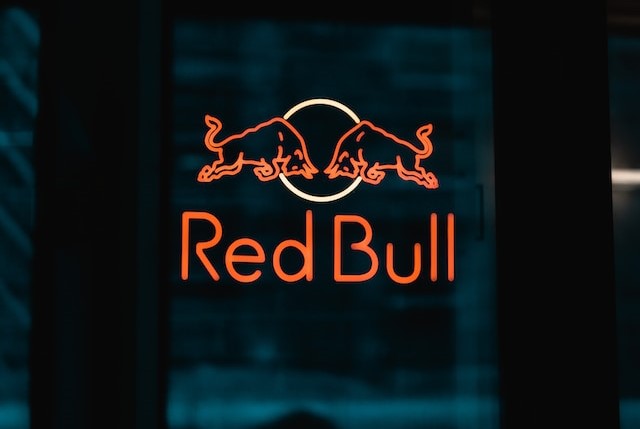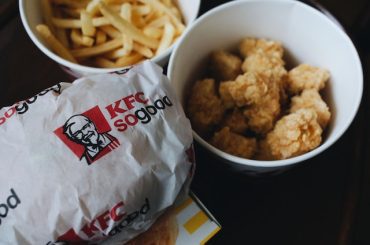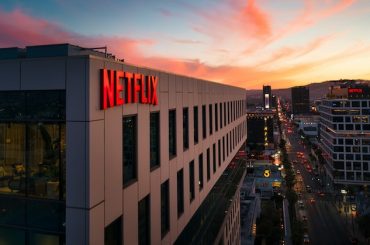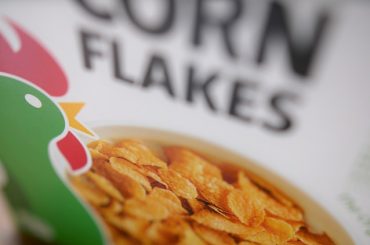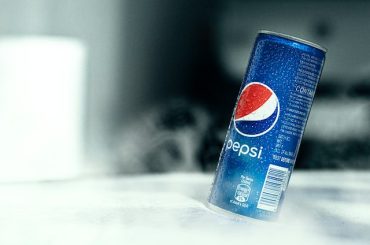Before we dive deep into the Marketing Mix (4Ps), let’s get the business overview of Red Bull. Red Bull GmbH is an Austrian company founded in 1987 by Dietrich Mateschitz and Chaleo Yoovidhya, best known for its Red Bull energy drink. The company has since grown into a global brand, expanding its product range and venturing into various marketing and sports events.
Market Presence: Red Bull is sold in over 170 countries, and it is the highest-selling energy drink globally, with a market share of more than 40%. The company has continued to grow, with annual sales of over 7 billion cans as of 2021.
A total of 12,138 billion cans of Red Bull were sold worldwide in 2023, representing an increase of 4.8% against a very successful 2022
Marketing Strategy: Red Bull’s unique marketing strategy focuses on building brand recognition through extreme sports, cultural events, and innovative advertising. The company has sponsored and organized numerous events, including the Red Bull Air Race, Red Bull Cliff Diving, Red Bull Crashed Ice, and Red Bull Flugtag. Red Bull also sponsors various athletes across different sports, including Formula 1, soccer, and skateboarding.
Red Bull Marketing Strategy: Sampling & Extreme Sports
Media Presence: Red Bull has a strong media presence through its Red Bull Media House, which produces content ranging from TV shows, movies, and documentaries to print and digital media. Red Bull’s media strategy has successfully created a lifestyle brand that appeals to a broad audience, particularly in the action sports and adventure space.
Corporate Social Responsibility: Red Bull has initiated several social and environmental programs, such as the Wings for Life Foundation, which focuses on spinal cord injury research. The company also aims to reduce its carbon footprint and has implemented various sustainability measures.
Financial Performance: Group turnover in 2023 was up 9% from EUR 9.684 billion to EUR 10.554 billion in 2022.
Here is the Marketing Mix (4Ps) for Red Bull
A marketing mix, also known as the 4Ps of marketing, is framework marketers use to develop and implement effective marketing strategies. The concept helps businesses identify and optimize the key components necessary to promote and sell their products or services. The 4Ps of the marketing mix are Product, Price, Place, and Promotion.
In addition to the traditional 4 Ps, marketers have expanded their strategies by incorporating additional elements (People, Process & Performance) to help them better understand and reach their target audiences. But we will focus on the 4Ps as they still are the foundation of any marketing strategy. In this article, we will understand the marketing mix (4Ps) of Red Bull.
What is a Marketing Mix? What are the 4Ps of Marketing?
Product
- Product Description: Red Bull is an energy drink in an 8.4-ounce slim can with a distinctive blue and silver design. The drink contains caffeine, taurine, B-group vitamins, sucrose, glucose, and Alpine water. These ingredients work together to improve mental and physical performance, providing increased energy, focus, and stamina.
- Unique Selling Proposition (USP): Red Bull’s USP is built around the slogan “Red Bull gives you wings,” which encapsulates the idea that the energy drink enhances performance and provides an energy boost to help consumers achieve their goals. Red Bull is a premium, functional beverage offering more than just hydration, differentiating itself from traditional soft and other energy drinks.
- Target Market: Red Bull primarily targets active, ambitious, and adventurous consumers, typically aged between 18 and 34. The brand appeals to people with busy lifestyles, such as students, professionals, and athletes, who require an energy boost to help them perform at their best.
- Product Extensions and Variations: To cater to different tastes and preferences, Red Bull has introduced several variations of the original product. These include sugar-free and reduced-calorie options and different flavors like Red Bull Coconut Edition, Red Bull Tropical Edition, and Red Bull Winter Edition. Additionally, Red Bull has branched into other product lines, such as the Red Bull Organics range of natural soft drinks.
Price
- Premium Pricing Strategy: Red Bull adopts a premium pricing strategy, positioning its energy drink as a high-quality product with a higher price than many competitors. The premium price reflects the brand’s unique selling proposition (USP) and its functional benefits. Consumers are often willing to pay more for Red Bull due to its perceived superior quality, taste, and performance-enhancing effects.
- Production Costs: Red Bull invests heavily in research and development, quality ingredients, and stringent production processes to ensure the final product meets high standards. These factors contribute to the overall production costs, reflected in the product’s price.
- Target Market: Red Bull targets an active, ambitious, and adventurous audience who value performance and are willing to pay a premium for a product that supports their lifestyle. Red Bull reinforces its positioning as a premium, high-performance energy drink by maintaining a higher price point.
- Competition: While pricing its products, Red Bull also considers the competition in the energy drink market. The company aims to differentiate itself from competitors by offering unique features and benefits that justify the premium price. Consumers may be more likely to choose Red Bull over lower-priced alternatives due to the brand’s strong reputation and perceived value.
- Promotions and Discounts: Red Bull occasionally offers promotions or discounts in selected channels or events to attract new customers or encourage trial purchases. However, the brand maintains a consistent price across different markets to uphold its premium positioning.
Place
- Red Bull Distribution Channels: Red Bull uses a combination of direct and indirect distribution channels to make its products available to consumers. The company partners with distributors, wholesalers, and retailers, including supermarkets, convenience stores, gas stations, bars, clubs, and restaurants. Red Bull also sells its products through online channels, such as e-commerce platforms and the company’s own website.
- Global Presence: Red Bull has a strong international presence, with its products available in more than 170 countries. The company focuses on expanding its distribution network to reach new markets and ensure its products are widely accessible to its target audience.
- Selective Distribution: Red Bull strategically places its products where the target audience is most likely to frequent. By focusing on selective distribution, the company ensures that its products are available in high-traffic areas, events, and venues that cater to its target markets, such as sporting events, music festivals, and fitness centers.
- Point-of-Sale (POS) Marketing: Red Bull invests in point-of-sale marketing to increase product visibility and create a strong brand presence at retail locations. This includes eye-catching displays, coolers, and branded merchandise that help the product stand out on shelves and entice consumers to purchase.
- Strategic Partnerships: Red Bull collaborates with various partners to expand its distribution network and increase product availability. These partnerships include collaborations with airlines, hotels, and event organizers, enabling the brand to reach its target audience in diverse settings.
Promotion
- Advertising: Red Bull uses a mix of traditional and digital advertising channels to communicate its brand message and showcase the product’s benefits. This includes print, television, radio, social media, and online advertising. The company is known for its creative and engaging advertising campaigns focusing on storytelling and emotional connections, reinforcing the slogan “Red Bull gives you wings.”
- Sponsorships and Event Marketing: One of Red Bull’s most effective promotional strategies is its involvement in sports, music, and cultural events. The company sponsors athletes, teams, and competitions across various disciplines, such as motorsports, extreme sports, and eSports. Red Bull also organizes and hosts events, like the Red Bull Air Race, Red Bull Flugtag, and Red Bull Music Academy. These sponsorships and events help create a strong association between the brand and high-energy, adrenaline-fueled activities, aligning with the product’s performance-enhancing benefits.
- Content Marketing: Red Bull is a pioneer in content marketing, using compelling content to engage with its target audience and promote the brand. The company produces and shares videos, articles, and multimedia content through various channels, including the Red Bull TV streaming platform, the Red Bulletin magazine, and social media. This content focuses on sports, culture, and lifestyle topics that resonate with the brand’s target audience, helping to establish Red Bull as a thought leader and lifestyle brand.
- Public Relations and Influencer Marketing: Red Bull leverages public relations and influencer marketing to generate buzz and amplify its brand message. The company collaborates with celebrities, athletes, and influencers, encouraging them to share their experiences with Red Bull and endorse the product. These partnerships help increase brand credibility and reach new audiences through word-of-mouth marketing.
- Sampling and Experiential Marketing: Red Bull uses product sampling and experiential marketing to encourage trial purchases and create memorable brand experiences. The company often distributes free samples at events, retail locations, and universities, allowing consumers to try the product firsthand. Red Bull also invests in experiential marketing campaigns, such as the Red Bull Stratos project, which featured skydiver Felix Baumgartner jumping from the edge of space, generating worldwide attention and reinforcing the brand’s adventurous spirit.

